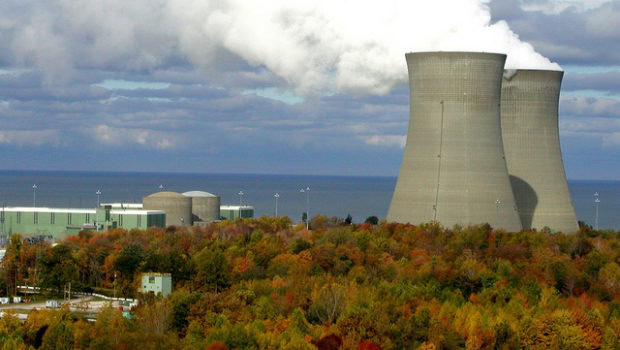
[Image above] Credit: Nuclear Regulatory Commission; Flickr CC BY-NC-ND 2.0
With all the gloom and doom surrounding the nuclear industry, you would think that the end of the line for the sector was on the horizon. Many environmentalists seem to have a bee in their collective bonnets about the dangers of nuclear power.
In fact, accidents in the nuclear industry have declined substantially in the past couple of decades. But there’s still more to be done about the developing nuclear’s potential as an alternative energy source while addressing cost, safety, and waste disposal issues.
If society really want to reduce carbon emissions and work toward solving global warming, its scientists need to focus on exploring nuclear energy technologies as part of an alternative energy source, according to a recently released report, The Future of Nuclear Energy in a Carbon-Constrained World, a collaboration between Massachusetts Institute of Technology’s Energy Initiative, Idaho National Laboratory, and University of Wisconsin-Madison. In addition, the report says, the nuclear industry needs to address cost and policy problems.
“Our analysis demonstrates that realizing nuclear energy’s potential is essential to achieving a deeply decarbonized energy future in many regions of the world,” study co-chair Jacopo Buongiorno, TEPCO Professor and associate department head of MIT’s Nuclear Science and Engineering Department explains in an MIT news release.
Nuclear as an energy source represents only 5% of global energy production. The report, a culmination of two years of research, is part of MIT Energy Initiative’s“Future of” series that focuses on problems, opportunities, and possible solutions to a variety of energy and environmental topics at the domestic and global levels.
The report states that nuclear energy powers 11% of all of the world’s electricity and is a major contributor of low-carbon electricity generation. This particular study addresses how nuclear power could play a role in helping to power the electric grid, which currently uses a mix of coal, natural gas, and other sources.
The study team recommends six major changes in nuclear plant construction to make them safer and more cost-effective:
- Using proven successful construction project management practices for building new plants, including bringing manufacturers and builders into the early design stage of the process,
- Building multiple standardized units and modular construction and involving the manufacturing sector to take advantage of higher productivity and converging technologies,
- Incorporating better safety features, including high heat capacity and high chemical and physical stability of core materials,
- Creating policies that encourage investment in nuclear technology,
- Establishing reactor sites for testing and operation of reactor prototypes for licensing that includes government oversight, and
- Government funding for prototype testing and commercial deployment of advanced reactor designs.
“Incorporating new policy and business models, as well as innovations in construction that may make deployment of cost-effective nuclear power plants more affordable, could enable nuclear energy to help meet the growing global demand for energy generation while decreasing emissions to address climate change,” Buongiorno adds in the release.
To read details of MIT Energy Initiative’s report, download it at this link. Watch the previously streamed video at this link.
Want to read more articles like this? Subscribe to the Ceramic Tech Today newsletter to continue to receive the latest news in the ceramic and glass industry right in your inbox! Visit this link to get started.
Author
Faye Oney
CTT Categories
- Energy
- Environment


